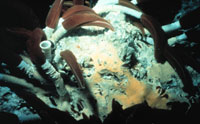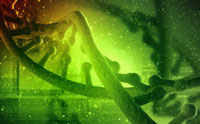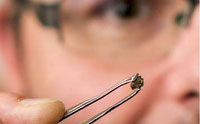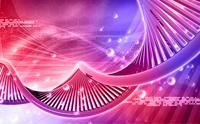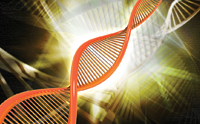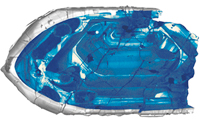Why comic book fiction is not biological reality …read more Read more here: creation.com
Do rocks and fossils hold clues that demand millions-of-years? Not the fossils from China’s Daohugou beds. On the contrary, their clues speak to more recent origins. More… …read more Read more here: icr.org
Spectacular details in a special worm fossil contradict even the longest age estimates for genetic disintegration. This worm should have gone extinct a thousand times over, but apparently it didn’t die off even once. More… …read more Read more here: icr.org
Exposed in various rock layers are large structures that look very much like ocean reefs preserved in stone. How did these thick reefs grow in place, if all the layers around them were deposited during the year-long Flood? …read more Read more here: AIG Daily
Some of the primary candidates for being labeled “Junk DNA” have been the highly repetitive regions of the genome that, after years of study, seemed to have no discernable function. However, new research has shown that the RNAs encoded by these regions are key players in promoting genome stability and function. More… …read more Read more here: icr.org
Just because a long-ager claims something doesn’t make it so. …read more Read more here: creation.com
Whether you love them or hate them (ugh, those molehills!), moles are testimony to a Creator. …read more Read more here: creation.com
Discovery inside a diamond in the rough shows Jules Verne wasn’t that far off when he wrote about a hidden ocean in Journey to the Centre of the Earth. …read more Read more here: AIG Daily
Bill Nye’s claim that there are no out of order fossils puts a bullseye on a weak spot for evolution. …read more Read more here: creation.com
As mere fragments, most fossils reveal only small hints of ancient life forms. But a fossilized fern’s stem recently discovered in Sweden shows its every detail, sending some clear messages about its origin. More… …read more Read more here: icr.org
Dinosaur skull changes the face of tyrannosaurus expectations and leads to speculation about ancient Arctic animal populations. …read more Read more here: AIG Daily
An international science team recently found a unique Brazilian diamond inclusion that indicates an abundance of water located as deep as Earth’s mantle. Could this find relate to the Bible’s description of the early Earth? More… …read more Read more here: icr.org
Cosmologists cast doubt on recent evidence cited for big bang ‘inflation’ …read more Read more here: creation.com
Modern genomics provides the ability to screen the DNA of a wide variety of organisms to scrutinize broken metabolic pathways. This data has revealed wide-spread genetic entropy in human genomes. …read more Read more here: AIG Daily
Resistant rootworms can ravage corn if farmers put all their eggs in a genetically modified high-tech basket. …read more Read more here: AIG Daily
Its exotic plants actually show evolution has not happened …read more Read more here: creation.com
The U.S. is having an oil boom—made possible by cutting-edge techniques that extract voluminous amounts of petroleum from shale rocks. Where did all this shale oil come from? More… …read more Read more here: icr.org
Australopithecine’s fatal fall preserved this fine fossil in a post-Flood cavern collapse. …read more Read more here: AIG Daily
Scientists believe that the study of genes that encode the proteins for molecular motors will help solve the mysteries of evolution. However, the result of a recent study has only served to support the predictions of special creation. More… …read more Read more here: icr.org
From the landing stage, to the exit gate, it’s no accident that the travel corridor for a gnat visiting an orchid is strictly one-way. …read more Read more here: creation.com
Granite rocks exhibit mysterious black spheres, known as radiohalos. The only reasonable explanation for their origin is a recent, worldwide Flood. …read more Read more here: AIG Daily
Whale evolution depends on three fossil species. Claims about these being transitional to whales have now been shown to be bogus. …read more Read more here: creation.com
The beautiful Barbary lion, now extinct, could be “re-built” and restored from its closest cousins. …read more Read more here: AIG Daily
Recent evidence of dual codes in the protein-coding sections of genes raised the bar on our understanding of genome complexity, and now a new study is showing that the control regions of genes contain dual codes as well. More… …read more Read more here: icr.org
Why are so many Ice Age fossils found in strange climates? …read more Read more here: creation.com
Researchers recently published an article in Nature Geoscience highlighting findings from their analysis of a detrital zircon from Australia. BBC News has cited this mineral as the “oldest scrap of Earth crust”—is this conclusion accurate? More… …read more Read more here: icr.org
‘Early Cambrian’ arthropod fossils showing ‘exceptionally preserved eyes’ with ‘modern optics’ should be an eye-opener for evolutionists-but they resort to ‘spin’ instead …read more Read more here: creation.com


















![Softly and Tenderly [Live] Softly and Tenderly [Live]](http://img.youtube.com/vi/QkDBdnJe3Xw/0.jpg)


